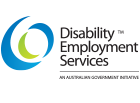
Technology in the workplace is evolving to make businesses more efficient and to make jobs easier for everyone.
When you employ a person living with disability, injury, health condition or disadvantage, they very often do not need any specific workplace changes to be effective in their role. But for those that do, some form of modification or adjustment will help support their independence at work, building a more equitable and inclusive workplace.
Workplace adjustments, including assistive technology, often not only benefit the person living with disability, injury, or health condition, but all members of your team.
What is assistive technology?
Assistive technology is equipment, a device or software that helps people do a task more safely or easily. It supports diversity and inclusion by making workplaces more accessible. Providing everyone with the opportunity to work independently, while giving employers the opportunity to access the full talent pool of potential candidates.
Assistive technology is not always high-tech and expensive; sometimes the simplest solutions can support a more diverse workforce.
They can be incorporated into workplace adjustments and accessibility planning to support a diverse workforce.
Types of assistive technology in the workplace
The types of assistive technology in the workplace can vary widely from text-to-speech software programs, to adjustable desks or modified vehicles. They can support learning and thinking differences, physical disabilities, and even support employees living with mental health conditions. There are many types of assistive technology, so speaking to your team members to create an individualised workplan is best. However here are a few examples:
1. Workplace infrastructure
When we look to make spaces accessible, we think of ramps, handrails, and spaces large enough to move around in, however, we can also be looking towards assistive technology. For example, light dimmers to increase or decrease the light in spaces, depending on an individuals’ need. Or, desks and counters which can be raised or lowered. Automatic doors, remotes or voice activated blinds for the windows are all examples of how assistive technology can be used to make workplaces more accessible.
2. Hardware
Hardware is another area where technology is improving rapidly. You can now access keyboards with simple large print, high contrast colours, and in more ergonomic designs. Similarly, computer mouses can come in many forms like a joystick which is easier to control.
There are devices that can turn spoken words into text, text into spoken word, and head wands or pointers to help navigate websites.
3. Software
Many forms of assistive technology in the workplace revolve around communication. Software, such as instant messaging, has become a handy tool for all people in the workplace to communicate. Employees appreciate the opportunity to choose what will best suit them when it comes to communication.
Other kinds of software you may not realise support people living with disability, injury or health condition include; spelling and grammar checks, and read-aloud functions, which support people living with learning disabilities or dyslexia to create and edit documents.
Voice command software is also widely used and is also beneficial for people with limited hand or arm movements, those without fine motor skills and many others, to be able to complete tasks more independently.
4. User experience
Assistive technologies can be used to improve an individual’s experience and includes items like extendable reaching devices, or adjustable desks.
You should also consider employees who are living with mental health conditions when looking at assistive technologies. Noise cancelling headsets can help reduce stress and anxiety, as well as help people to perform more productively. Similarly, an employee who has difficulty concentrating can use a productivity timer to stay on task.
Again, it’s all about making sure the technology you use is suitable for the individual, tailored to them, and to their workplace tasks.
5. Work arrangements
With flexible work becoming more and more common, many people living with disability, injury or health condition are benefiting from having flexible work. Their home may already have assistive technologies they can use to support them in their employment.
Microsoft Teams and other remote working programs assist people to connect better than ever. While flexible work times allow the opportunity to meet appointments needed to support their health.

Benefits of assistive technology
The majority of your workforce will benefit from using assistive technology in various aspects of their day during work. No matter what the workplace adjustment or modification may be, it will benefit not only the person living with disability, injury or health condition, but all members of the team.
Many of us are already benefiting from artificial intelligence (AI) innovations, such as image recognition, speech to text, chatbots and self-driving vehicles. Not only does technology like this benefit an individual but society as a whole.
They also heavily impact workplace culture. When a new starter can see their place of employment is diverse, welcoming and willing to invest in their team members, it creates a positive workplace culture, which is important to retaining and attracting team members.
We’ve previously shared the benefits of hiring with diversity, and assistive technology can further help you to create a more diverse workforce. These benefits include:
1. Productivity
Inclusive workplaces are likely to be more engaged, motivated, and productive, with employees staying with a diverse business for longer. Recruitment strategies that include the employment of people with disability also opens the door to other diverse groups, helping to meet HR targets while supporting employers to benefit from the full talent pool.
When we incorporate assistive technologies into our workforce planning, we enhance the capabilities and level the playing field for people living with disability, injury or health condition.
All staff want to do well and be productive in their work. Increased independence also leads to improved job satisfaction, self-esteem and confidence, which can in turn, boost motivation and productivity.
Assistive technologies support people to thrive in their working environments resulting in motivated and capable staff.
2. Job satisfaction
Your employer branding is a representation of how you are viewed by your current employees, customers, as well as prospective candidates who are seeking new opportunities. Often, professionals prefer organisations that embrace diversity, feeling it is an important part of a company’s culture.
When you highlight a diverse staff or various initiatives that focus on inclusivity, you are more likely to be seen as an employer of choice. This can bolster your retention and recruitment efforts, increasing the odds you are considered a company that professionals want to find opportunities with and stay with for the long-term.
3. Workplace health and safety
Workplace health and safety is improved for everyone. Many assistive technologies make the workplace more accessible and ergonomic which reduce the overall risk of work-related injuries which can lead to costly claims.
Challenges implementing assistive technologies
You may be thinking that all of these benefits sound great, but you are still worried about some of the challenges that come with implementing assistive technologies like the cost, or a lack of understanding of what will work best for your team.
Here are some tips:
Procurement costs
Many workplace adjustments are low cost and some changes, such as flexible working hours, involve no cost at all! People living with disability, injury or health condition, employers and service providers may also be eligible to receive financial assistance to cover workplace adjustments through the Australian Government’s Employment Assistance Fund (EAF). The atWork Australia team can support you to access the right funding.
Lack of awareness
Finding the “best match” between a person, their work environment, and technology requires careful input from the employee themselves and relevant professionals. People who live with disability, injury, health condition or disadvantage are usually knowledgeable about who and where they can go to for assistance.
Making sure the technology matches an individual’s needs in the best possible way is critical as poorly chosen items may be of little assistance to the user. Again, atWork Australia can support both parties to connect with the right organisations.
Recommendations for workplaces
Research your employees’ needs
Encourage them to speak up about any workplace modifications and adjustments they might need.
Provide training on using assistive technology
Provide training either to the individual or the entire organisation on how the technology works. You may not realise it could assist others to be more productive as well.
Provide reasonable adjustments
Be flexible with working hours, locations and tasks. Look for ways in which you can support your team members to perform at their best. For example, could the instructions be changed from written to an image?
Advocate for workers with disabilities
Encourage hiring with diversity. Don’t allow managers and others to assume what someone living with a disability can and can’t do. With a little bit of support, they can achieve their full potential, and are more loyal and motivated employees.
Shaun’s Story
Whilst holidaying in Bali at the age of 19, Shaun contracted a rare virus and lost 90% of his vision. Unable to continue his apprenticeship as a Boilermaker and life as he knew it, he was faced with the challenge of re-assessing his work and life goals. He became a client of atWork Australia after his paralympic career and was hired by atWork Australia as a Brand Ambassador. Shaun speaks about living with disability and the barriers that are still at hand despite the advances in society and technology. He advocates change, drives strategic community engagements, and educates society; making an everlasting difference within the Australian community. Shaun is also part of the Marketing and Client Experience team, writing and preparing content for our website and developing presentations to share in his advocacy work.
To do this, Shaun uses assistive technology including software which magnifies his screen and voice controls on his phone. “I use a screen magnifier called Zoom Text, I have desktop and handheld magnifiers, iPhone is very handy to take photos and then be able to zoom in on the photo. It is important to have a supportive workplace, with colleagues who understand your barriers and know how they can assist you, including providing information in the accessible format,” said Shaun. Learn more about Shaun here.
Tracey’s Story
Disability Employment Services client, Tracey, required knee surgery which meant she required some small modifications to her workplace. Unable to sit for long periods of time, atWork Australia supported Tracey and her employer to purchase a sit-stand desk. By providing Tracey with this modification, she has been able to return to work. Working has provided Tracey with freedom and independence; she is enjoying being back in the workplace. Tracey believes works for everyone. “Work’s for everyone. It helps you mentally, physically, emotionally,” said Tracey. Listen to Tracey’s story here.
Conclusions
- Look at practical, useful, and affordable technology;
- Use technology to improve independence and promote productivity;
- Hiring with diversity improves workplace culture;
- Assistive technologies often make the workplace a safer environment for everyone; and
- Keep up to date: regularly look at technologies and ask your team members if there is anything else they might need
Download the fact sheet: Is your workplace accessible?
Download our myth busting fact sheet where we break down the myths and misconceptions about what workplace adjustments really are, and how your business can get started on your journey to creating a truly inclusive and accessible environment for your team.
Want more resources?
Download resources to help reimagine how your business operates with diversity and inclusion at the heart of your workforce.
atWork Australia can help your business access a broader pool of talented candidates through our disability recruitment services, connecting you to pre-screened candidates free-of-charge. We can also assist you to learn more about funding for workplace modifications. Call us today on 1300 080 856.



